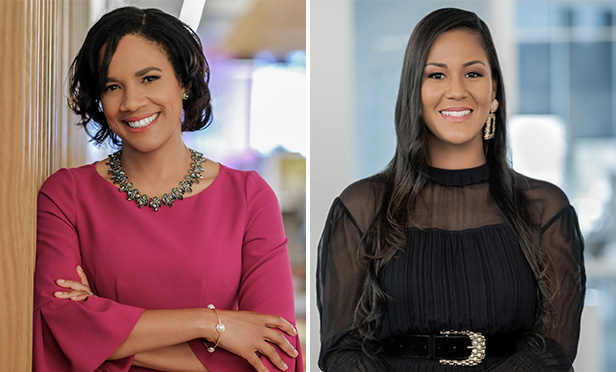
 2050 Wealth Partners founders Lazetta Rainey Braxton (left) and Rianka R. Dorsainvil
2050 Wealth Partners founders Lazetta Rainey Braxton (left) and Rianka R. Dorsainvil
The U.S. Census Bureau has projected that people of color will make up the majority of the U.S. population by 2050. To celebrate and highlight this change, Lazetta Rainey Braxton, 46, and Rianka R. Dorsainvil, 32, two proud women of color, have merged their solo advisories into a new virtual firm, 2050 Wealth Partners.
Although both women have traveled diverse paths at least a decade apart, their similarities drew them together. Both have tenacity to overcome obstacles, both have empathy to help others and both have a passion for the business. They also understand the benefit of their Gen X/millennial age link in helping clients.
Six years ago, Dorsainvil, who had just spent four years working in wealth management "in the corporate world" began to wonder, "is this profession for me?"
"I loved what I was doing. I loved working with clients, [but] I was just hitting some roadblocks with [my] current firm," Dorsainvil said.
She had grown frustrated that friends from college who were "hitting their stride" wanted to hire her as a financial planner ("I was that person," she says of being the one who educated her friends in college on their finances).
The problem was, her firm had a minimum of $1 million in investable assets, which her friends had yet to accumulate.
She connected with Eleanor Blayney, a chief consultant of the Certified Financial Planner Board of Standards, who advised her not to leave the profession, saying, "You need to meet Lazetta Rainey Braxton."
Dorsainvil hunted Braxton down at a meeting of the Association of African American Financial Advisors, or Quad-A — where the latter was the new president — and she realized "I'm going to follow her coattails, if she wants it or not," Dorsainvil said.
Although Blayney already had told Braxton about Dorsainvil's "energy and passion," she really was thankful for the younger woman's persistence.
"After the event, we would have long conversations. … I just felt her energy really fed me as well," Braxton says of her partner.
It took a while for Braxton to agree to a merger as she was a bit "intimidated" by the younger dynamo. "[But] it was really a sisterhood. … Rianka was tenacious, clear and determined and that takes a lot of courage and risk. She said those things of me [too]. It was a match made in heaven."
Both women grew up in Virginia. Braxton came from rural Virginia, and worked her way through the University of Virginia to study finance. She had been offered a basketball scholarship at a Division II school, but turned it down. She knew sports weren't going to get her to where she wanted to go.
But UVA didn't have a financial planning program per se. "I didn't even know about the concept of financial planning until after I got my MBA," she says, not even doing her CFP work until 2006. She worked her way into wealth management on Wall Street, but also moved around with her husband's job before settling in Maryland.
Dorsainvil also was the first to go to college and graduate in her family, but she went to Virginia Tech (and despite the rivalry between UVA and VT, she says, she and Braxton still merged).
She was always good in math and followed that as her path until one professor told her about the CFP registered program. "I didn't even know it existed."
THINKADVISOR: Who were some of the key mentors or role models in your life?
BRAXTON: I have to give credit to Melissa Hammel, she's a CFP. She is how I found out about financial planning. Her father owned probably one of the first financial planning firms [in Nashville, Tennessee]. Melissa and my paths crossed because of my employer. She said, "I'm a CFP," and I said, "That's who I want to be!"



